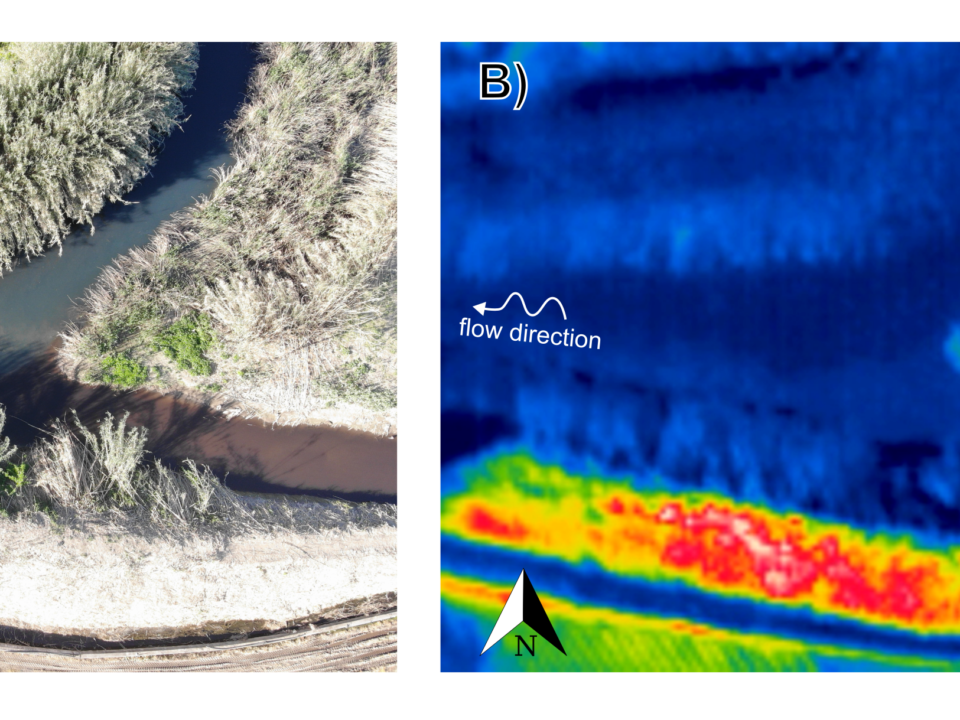http://antarvasnavideos.pro sex videos kinky babe fisting her large pussy. https://bigboobslovers.net/ hungry mom loves throat fucking.

Image processing for continuous river turbidity monitoring – full scale tests and potential applications
6 September 2024
Innovative Technologies and Approaches in Hydrological Monitoring
12 November 2024As part of the Erasmus+ program, the University of Naples (UNINA), Helmholtz Centre for Environmental Research (UFZ), Carinthia University of Applied Sciences (CUAS), University of Debrecen (UD), Politehnica University Timisoara (PUT), University of Twente (UT), and Technische Universität Dresden (TUD) are organizing a Blended Intensive Programme at the University of Naples from October 16, 2024, to October 23, 2024.
The initiative aims to promote innovative monitoring strategies, leveraging the international experience gained from the HARMONIOUS project. This proposal serves as a natural extension of the training activities undertaken within HARMONIOUS, intending to establish harmonized monitoring practices and disseminate the latest advancements in Unmanned Aerial Systems (UAS) methodologies.
The program will foster stronger institutional ties between the participating universities, with the goal of creating an innovative framework for using UAS to monitor vegetation dynamics, river systems, and soil processes with unprecedented spatio-temporal resolutions. The objective is to develop a course that provides participants with guidelines, technical support, and practical experience to enhance their knowledge both theoretically and practically. Additionally, students will gain hands-on field experience through practical exercises, enabling the immediate application of the proposed techniques and methods to real-world case studies.
Lectures
Prof. Sorin Herban – Politehnica University of Timisoara
Prof. Anette Eltner – Technische Universität Dresden
Dr. László Bertalan – University of Debrecen
Prof. Salvatore Manfreda – University of Naples Federico II
Dr. Seifeddine Jomaa – Helmholtz Centre for Environmental Research
Prof. Gernot Paulus – Carinthia University of Applied Sciences
Dr. Dariia Strelnikova – Carinthia University of Applied Sciences
Prof. Yijian Zeng – University of Twente
Suggested Readings:
- Acharya, B. S., Bhandari, M., Bandini, F., Pizarro, A., Perks, M., Joshi, D. R., et al. (2021). Unmanned Aerial Vehicles in Hydrology and Water Management: Applications, Challenges, and Perspectives. Water Resources Research, 57(11), e2021WR029925. https://doi.org/10.1029/2021WR029925
- Bahmanpouri, F., Eltner, A., Barbetta, S., Bertalan, L., & Moramarco, T. (2022). Estimating the Average River Cross‐Section Velocity by Observing Only One Surface Velocity Value and Calibrating the Entropic Parameter. Water Resources Research, 58(10), e2021WR031821. https://doi.org/10.1029/2021WR031821
- Bertalan, L., Novák, T. J., Németh, Z., Rodrigo-Comino, J., Kertész, Á., & Szabó, S. (2018). Issues of Meander Development: Land Degradation or Ecological Value? The Example of the Sajó River, Hungary. Water, 10(11), 1613. https://doi.org/10.3390/w10111613
- Bertalan, L., Rodrigo-Comino, J., Surian, N., Šulc Michalková, M., Kovács, Z., Szabó, S., et al. (2019). Detailed assessment of spatial and temporal variations in river channel changes and meander evolution as a preliminary work for effective floodplain management. The example of Sajó River, Hungary. Journal of Environmental Management, 248, 109277. https://doi.org/10.1016/j.jenvman.2019.109277
- Cucchiaro, S., Cavalli, M., Vericat, D., Crema, S., Llena, M., Beinat, A., et al. (2018). Monitoring topographic changes through 4D-structure-from-motion photogrammetry: application to a debris-flow channel. Environmental Earth Sciences, 77(18), 632. https://doi.org/10.1007/s12665-018-7817-4
- Cucchiaro, S., Fallu, D. J., Zhang, H., Walsh, K., Van Oost, K., Brown, A. G., & Tarolli, P. (2020). Multiplatform-SfM and TLS Data Fusion for Monitoring Agricultural Terraces in Complex Topographic and Landcover Conditions. Remote Sensing, 12(12), 1946. https://doi.org/10.3390/rs12121946
- Detert, M., Johnson, E. D., & Weitbrecht, V. (2017). Proof‐of‐concept for low‐cost and non‐contact synoptic airborne river flow measurements. International Journal of Remote Sensing, 38(8-10), 2780-2807.
- Eltner, A., Mader, D., Szopos, N., Nagy, B., Grundmann, J., & Bertalan, L. (2021). Using Thermal and RGB UAV imagery to measure surface flow velocities of rivers. The International Archives of the Photogrammetry, Remote Sensing and Spatial Information Sciences, XLIII-B2-2021, 717–722. https://doi.org/10.5194/isprs-archives-XLIII-B2-2021-717-2021
- Eltner, A., Sardemann, H., & Grundmann, J. (2020). Flow velocity and discharge measurement in rivers using terrestrial and unmanned-aerial-vehicle imagery. Hydrology and Earth System Sciences, 24(3), 1429-1445.
- Eltner, Anette, Bertalan, L., Grundmann, J., Perks, M. T., & Lotsari, E. (2021). Hydro‐morphological mapping of river reaches using videos captured with UAS. Earth Surface Processes and Landforms, 46(14), 2773–2787. https://doi.org/10.1002/esp.5205
- Eltner, Anette, Hoffmeister, D., Kaiser, A., Karrasch, P., Klingbeil, L., Stöcker, C., & Rovere, A. (Eds.). (2022). UAVs for the environmental sciences: methods and applications. Darmstadt: wbg Academic.
- Fonstad, M. A., Dietrich, J. T., Courville, B. C., Jensen, J. L., & Carbonneau, P. E. (2013). Topographic structure from motion: a new development in photogrammetric measurement. Earth Surface Processes and Landforms, 38(4), 421–430. https://doi.org/10.1002/esp.3366
- Francos, N., N. Romano, P. Nasta, Y. Zeng, B. Szabó, S. Manfreda, G. Ciraolo, J. Mészáros, R. Zhuang, B. Su, E. Ben-Dor, Mapping Water Infiltration Rate Using Ground and UAV Hyperspectral Data: a Case Study of Alento, Italy. Remote Sensing, 13, 2606, (doi: 10.3390/rs13132606), 2021. [pdf]
- Kasvi, E., Salmela, J., Lotsari, E., Kumpula, T., & Lane, S. N. (2019). Comparison of remote sensing based approaches for mapping bathymetry of shallow, clear water rivers. Geomorphology, 333, 180–197. https://doi.org/10.1016/j.geomorph.2019.02.017
- Lang, N., Irniger, A., Rozniak, A., Hunziker, R., Wegner, J. D., & Schindler, K. (2021). GRAINet: mapping grain size distributions in river beds from UAV images with convolutional neural networks. Hydrology and Earth System Sciences, 25(5), 2567–2597. https://doi.org/10.5194/hess-25-2567-2021
- Ljubičić R.D., D. Strelnikova, M. T. Perks, S. F. Dal Sasso, A. Eltner, S. Peña-Haro, A. Pizarro, P. Vuono, U. Scherling, S. Manfreda, A comparison of tools and techniques for stabilising unmanned aerial system (UAS) imagery for surface flow observations. Hydrology and Earth System Sciences, 25, 5105–5132, (doi: 10.5194/hess-25-5105-2021) 2021. [pdf]
- Mair, D., Do Prado, A. H., Garefalakis, P., Lechmann, A., Whittaker, A., & Schlunegger, F. (2022). Grain size of fluvial gravel bars from close-range UAV imagery – uncertainty in segmentation-based data. Earth Surface Dynamics, 10(5), 953–973. https://doi.org/10.5194/esurf-10-953-2022
- Manfreda et al. Assessing the Accuracy of Digital Surface Models Derived from Optical Imagery Acquired with Unmanned Aerial Systems, Drones,
- Manfreda, S., D. Miglino, K. C. Saddi, S. Jomaa, A. Etner, M. Perks, D. Strelnikova, S. Peña-Haro, I. Maddock, F. Tauro, S. Grimaldi, Y. Zeng, G. Gonçalves, T. Bogaard, T. van Emmerik, M. Bussettini, S. Mariani, G. Marchetti, B. Lastoria, B. Su, M. Rode, (2024) Advancing river monitoring using image-based techniques: challenges and opportunities, Hydrological Sciences Journal, (https://doi.org/10.1080/02626667.2024.2333846).
- Manfreda, S., E. Ben Dor, (2023) Unmanned Aerial Systems for Monitoring Soil, Vegetation, and Riverine Environments, Earth Observation Series, Elsevier. [Link]
- Miazza, R., Pascal, I., & Ancey, C. (2024). Automated grain sizing from uncrewed aerial vehicles imagery of a gravel‐bed river: Benchmarking of three object‐based methods. Earth Surface Processes and Landforms, 49(5), 1503–1514. https://doi.org/10.1002/esp.5782
- Nex, F., Armenakis, C., Cramer, M., Cucci, D. A., Gerke, M., Honkavaara, E., et al. (2022). UAV in the advent of the twenties: Where we stand and what is next. ISPRS Journal of Photogrammetry and Remote Sensing, 184, 215–242. https://doi.org/10.1016/j.isprsjprs.2021.12.006
- Pearce, S.; R. Ljubičić; S. Peña-Haro; M. Perks; F. Tauro; A. Pizarro; S.F. Dal Sasso; D. Strelnikova; S. Grimaldi; I. Maddock; G. Paulus; J. Plavšić; D. Prodanović; S. Manfreda,An Evaluation of Image Velocimetry Techniques under Low Flow Conditions and High Seeding Densities Using Unmanned Aerial Systems. Remote Sensing, 12, 232, (doi: 10.3390/rs12020232) 2020. [pdf]
- Perks, M. T. (2020). KLT-IV v1. 0: Image velocimetry software for use with fixed and mobile platforms. Geoscientific Model Development, 13(12), 6111-6130.
- Perks, M. T., S. F. Dal Sasso, A. Hauet, E. Jamieson, J. Le Coz, S. Pearce, S. Peña-Haro, A. Pizarro, D. Strelnikova, F. Tauro, J. Bomhof, S. Grimaldi, A. Goulet, B. Hortobágyi, M. Jodeau, S. Käfer, R. Ljubičić, I. Maddock, P. Mayr, G. Paulus, L. Pénard, L. Sinclair, and S. Manfreda, Towards harmonisation of image velocimetry techniques for river surface velocity observations. Earth System Science Data, 12, 1545–1559, (doi: 10.5194/essd-12-1545-2020) 2020. [pdf]
- Pizarro, A., S.F. Dal Sasso, S. Manfreda,VISION: VIdeo StabilisatION using automatic features selection for image velocimetry analysis in rivers, SoftwareX, 19, 101173, (doi: 10.1016/j.softx.2022.101173) 2022. [pdf]
- Tarolli, P., & Mudd, S. M. (2020). Remote sensing of geomorphology(1st ed). Amsterdam: Elsevier.
- Tmušić, G., Manfreda, S., Aasen, H., James, M. R., Gonçalves, G., Ben-Dor, E., et al. (2020). Current Practices in UAS-based Environmental Monitoring. Remote Sensing, 12(6), 1001. https://doi.org/10.3390/rs12061001
- Westoby, M. J., Brasington, J., Glasser, N. F., Hambrey, M. J., & Reynolds, J. M. (2012). ‘Structure-from-Motion’ photogrammetry: A low-cost, effective tool for geoscience applications. Geomorphology, 179, 300–314. https://doi.org/10.1016/j.geomorph.2012.08.02
—–
Instructions:
EU students (undergraduate, Ph.D. candidates, but also staff) can apply through their Erasmus offices and receive financial support of €70/day for their stay in Naples.
Applications should be submitted through the Erasmus office of the sending institute, using the BIP code: 2023-1-IT02-KA131-HED-000120112-8. Salvatore Manfreda is coordinating the BIP, and Francesca Pagliara (fpagliar@unina.it) is the Erasmus coordinator.
Directions

The course will take place at the “Historical Library” of the Faculty of Engineering at Piazzale Tecchio Napoli.
By train:
• Railways: Napoli Campi Flegrei Station
• City train line Cumana: stop Mostra Station
• Subway Metro Line 6: stop Mostra Station
• Subway Metro Line 2: stop Campi Flegrei Station.
By bus:
151 ANM Line: from Piazza Garibaldi, Molo Beverello or Piazza Vittoria to Piazzale Tecchio.
——
ACCOMODATION IN FUORIGROTTA
• HOTEL Esedra: https://maps.app.goo.gl/nxLQ6f5rdTPPMyeB9
• B&B Anthea: https://maps.app.goo.gl/yjtU2cF94qrsyKzu7
• B&B Cocor: https://maps.app.goo.gl/BWwJ7d3SakXKVBWo9
website
big black teen apparel theft.http://desivideos4k.com/ cassandra nix and eva karera threesome.








































